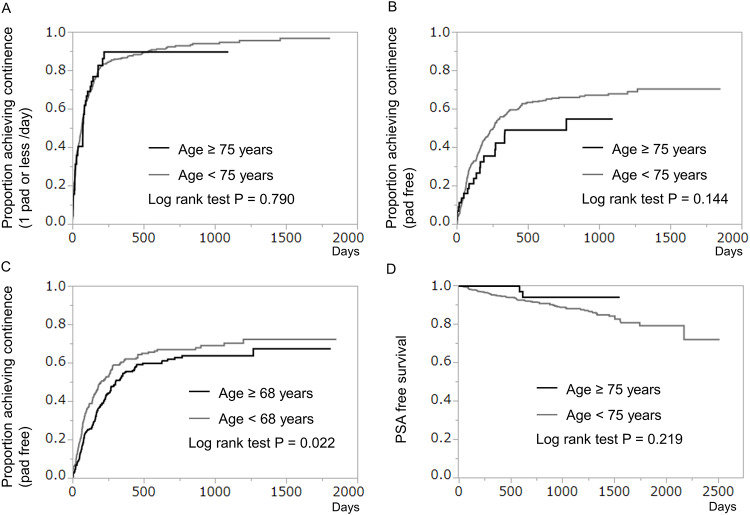Fig 1.
A-C: Kaplan-Meier curves showing cumulative proportion of achieving continence after robot-assisted radical prostatectomy (RARP). D: Kaplan Meier curve showing PSA free survival in patients who underwent RARP. (A) Proportion of patients achieving 1 pad or less/day for urinary continence. There were no significant differences between patients of age ≥ 75 years and patients of age < 75 years (log-rank test P = 0.790). (B) Proportion of patients achieving pad-free status for urinary continence. There were no significant differences between patients of age ≥ 75 years and patients of age < 75 years (log-rank test P = 0.144). (C) Proportion of patients achieving pad-free status for urinary continence in men of age ≥ 68 years and < 68 years. Younger patients (age < 68 years) had a significantly higher recovery rate (log-rank test P = 0.022). (D) There were no statistically significant differences regarding PSA free survival between the two groups (log-rank test P = 0.219).

